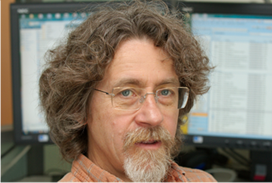Jonathan Grudin

For forty years I have addressed methods and processes to develop useful technologies, and the design, adoption, and especially use of communication and collaboration tools. I am also focused on understanding the publication cultures and broad histories of the fields with which I’ve engaged. Essays on a range of topics for ACM Interactions, included under Publications, were a major investment.
Highlights
Education and Employment
My Path
I was born in Colorado and grew up in an Ohio village. My parents were from Massachusetts and New York. I adopted an approach to making sense of a world that at times seemed confusing, which has not changed much. Everyone I met knew things that I didn’t and seemed worth learning from.
In high school I could walk half a mile and use a small computer on weekends. My first program generated twin primes, my second dealt random bridge hands, and another compiled statistics for a survey of my fellow high school students. The survey results looked official and annoyed the administration. They banned student surveys, a lesson in unintended consequences of technology use. I programmed less at Reed College, where computer science was not taught. I explored a more diverse, sophisticated world.
I was diverted from following my father’s path into mathematics by Vietnam and the draft, by my brother convincing me to drive us to the Woodstock festival, and by a graduation gift of an airplane ticket for a summer in Europe. I got a job programming, astonished that people paid rather than charged me to do it.
My goal was to work to earn money to travel, but I also began reading psychology and anthropology and (after traveling) worked and studied at Stanford and UCSD, where my advisor was Don Norman. During a neuropsychology postdoc at a Medical Research Council unit in Cambridge, I encountered and joined one of the first human-computer interaction research groups. My direction was set.
I returned to the computer field as a software engineer, then industry researcher. I was hired as a visiting professor at Aarhus University, then joined UC Irvine, spending half-years at Keio University, at the University of Oslo, and lecturing on behalf of ACM in central and east Europe, newly freed from the Soviet orbit. A move to Microsoft resolved a two-body problem. It was a good environment for someone stimulated by challenges around him.
I became an affiliate professor in what is now the University of Washington Information School and organized its first NSF grant proposal on collaborative information retrieval, a joint effort of UW, Microsoft, and Boeing, the latter represented by my long-time collaborator Steve Poltrockk.
Some details of my journey through human-computer interaction and computer supported cooperative work are in an appendix to my 2017 book From Tool to Partner: The Evolution of Human Computer Interaction. As we approached the end of the pre-GUI era, I worked on command names and abbreviations, and a small study that showed that aesthetics can outweigh performance in appealing to users. I was fortunate to work on an early industry GUI development project, but more fatefully was asked to work on applications to support groups, which proved much more difficult than productivity tools for individuals. This, and a desire to improve the practices that then governed interactive software development, set my research direction.
Other challenges and opportunities encountered in work and life drew my attention, ranging from better exploitation of multiple monitors to why HCI has followed the historical path it has. When I was asked in 2012 to look at an issue in K-12 education, having daughters in school added to my interest, but when I saw the newly-emerging potential I fully signed on and have worked on education unti my retirement in December, 2022.

